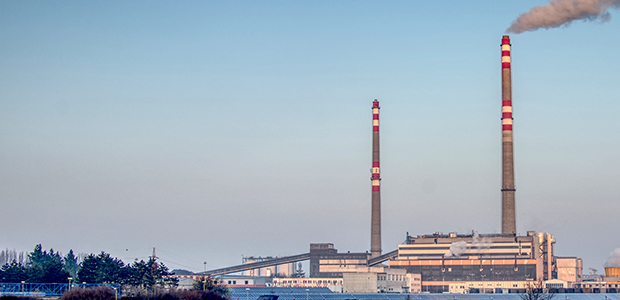
IER Considers British Heat Wave’s Lessons
Great Britian’s aggressive push to expand wind and solar power has yielded the unintended consequence of adding coal-fired generation to the mix this summer, observes the Institute for Energy Research. IER offers that observation in a late June analysis, which explains that a summer heat wave in the United Kingdom has sapped a portion of the country’s solar power generation and prompted it to activate old coal plants to keep its power grid going.
However, the country is on track to place even more faith in renewable energy sources by removing that coal-fired safety net, IER says, warning this could lead to power rationing or blackouts.
“To meet a net zero carbon emissions mandate by 2050, Britain has increased its renewable capacity, and is now receiving 31% of its electricity generation from wind and solar power, which are not dispatchable (available on demand) and not reliable sources of electricity,” the piece assesses. “The birthplace of the Industrial Revolution, which used coal to become a world economic and political powerhouse, is now reeling as it reduces reliance on traditional energy sources and focuses on weather-based wind and solar power.”
Slipping Solar Efficiency
While solar panels need sunlight, their efficiency falls as temperatures rise, IER reports. According to the organization, every temperature degree increase in a solar cell above 25 degrees C (77 degrees F) cuts its efficiency 0.5%. Moreover, the institute notes, cells in direct sunlight easily can reach 60 degrees C (140 degrees F) or hotter, which can steal 25% or more of their output during a heatwave.
To avoid power interruptions, the analysis relates, consumers received power from a unit at Uniper’s Ratcliffe-on-Soar coal-fired plant in Nottinghamshire, while another coal plant was warmed up as a contingency. IER mentions that the Ratcliffe-on-Soar facility was to be shuttered in 2022, and still is scheduled for retirement in 2024 under Britain’s plan to close its coal-fired power plants by Oct 2024 to meet its goal of reaching net-zero carbon dioxide emissions by 2050.
“In Europe, there have been concerns over electricity shortages amid disruption to natural gas supplies triggered by Russia’s war on Ukraine and outages in the French nuclear fleet,” IER relates. “France is normally a major exporter of power to Britain and the continent, but outages on its nuclear fleet turned it into a net importer during the first half of 2022.”
Therefore, the institute explains, British generators have agreed to maintain their coal units for backup supply. However, IER indicates, the coal-fired safety net exacts a steep cost.
“Last summer, the National Grid Electricity System Operator (ESO) negotiated a winter contingency contract with five coal generators,” the report recounts. “At the time of the contract, the cost was forecasted to be around £340 million ($406 million) to £395 million ($471 million) and was subject to the procurement of coal. If and when the units were called upon to run, the cost of the European carbon allowance would be added. Coal became an insurance policy against the failure of intermittent renewable energy to generate electricity.”
Although plans for U.K. power production indicate that activating coal plants will not be an option during future electricity shortages, IER warns that the country’s dedication to intermittent, renewable sources points to a future in which generators may have to offer consumers incentives to dial back their energy use. Octopus Energy already has tried such incentives to ease stress on the grid, IER reports.
“So, what happens once the coal plants shut down and the weather causes a spike in demand?” the analysis poses. “Regulators say Britain’s electric grid may have to permanently reward customers for using less energy at peak times in order to reduce its dependence on coal.”
By placing so many eggs in the renewable energy basket, IER suggests, the United Kingdom is jeopardizing its economy and citizens’ standard of living.
“Britain is putting its electricity system in the hands of renewable power generators as it closed its nuclear power plants last year,” the institute assesses. “As gas supplies remain extremely tight in Europe this year with less supplies from Russia, more of Britain’s electricity is coming from intermittent wind and solar power, posing challenges for balancing the grid and keeping the lights on. Asking consumers to reduce power during peak periods, is moving toward a third-world electricity supply, and not an option that a major economic power should be undertaking.
“Not having enough backup power reeks of potential blackouts if consumers do not comply,” IER concludes. “And, asking consumers to reduce their electricity demand during peak periods could be the start of power rationing that could lead to a third-world power supply situation. It is a particular irony of our times that Britain, who first used coal to create the Industrial Revolution, now finds itself scavenging for enough electricity to keep its lights on as it contorts to a self-imposed scarcity of energy owing to its adherence to the Paris Accords.”
The IER analysis can be found at Britain Fires Up Coal Plants Due to Lower Output from Renewables and Higher Demand from a Heat Wave.
For other great articles about exploration, drilling, completions and production, subscribe to The American Oil & Gas Reporter and bookmark www.aogr.com.






